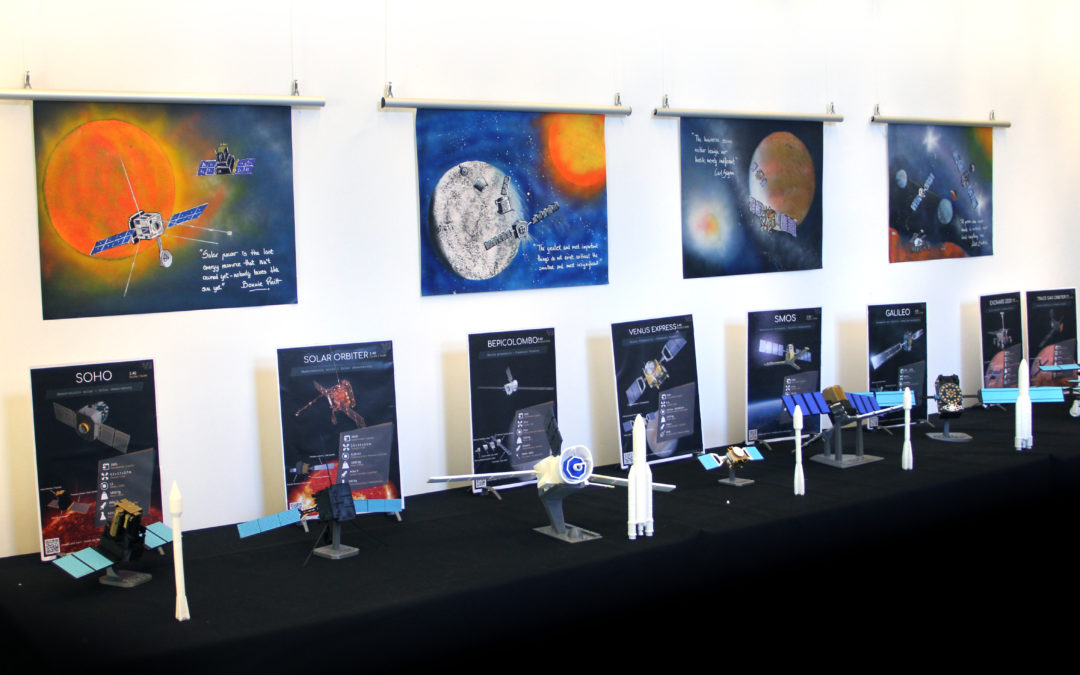ESA’s ESAC D-bulding hosts during this summer an Artistic-Scientific-Technological exhibition by SpaceRobotics, where planetary exploration is presented in an absolutely innovative way.
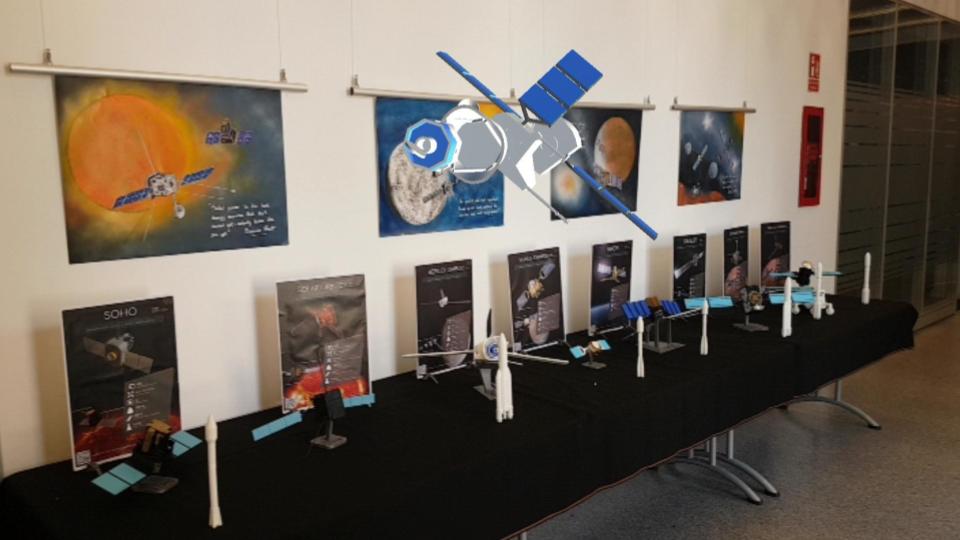 The exhibition itself is about ESA’s exploration of the Universe and displays many of the satellites and spacecraft that the agency has used for this purpose. It is definitely an exciting experience not only because it allows you to explore space science missions in the very same center where their data is stored and analyzed, but also because of the way in which these missions are presented, as, as seen in the images, for many of them, artistic, physical-3D-printed and even virtual representations are in display. Artistic representations are unsigned paint-on-canvas drawings credited to SpaceRobotics. Each of these pieces portraits a beautifully-drawn Solar-System-object and an artistic representation of the ESA mission that went all the way there to explore it. Also, each painting includes a famous quote somehow related to that particular mission.
The exhibition itself is about ESA’s exploration of the Universe and displays many of the satellites and spacecraft that the agency has used for this purpose. It is definitely an exciting experience not only because it allows you to explore space science missions in the very same center where their data is stored and analyzed, but also because of the way in which these missions are presented, as, as seen in the images, for many of them, artistic, physical-3D-printed and even virtual representations are in display. Artistic representations are unsigned paint-on-canvas drawings credited to SpaceRobotics. Each of these pieces portraits a beautifully-drawn Solar-System-object and an artistic representation of the ESA mission that went all the way there to explore it. Also, each painting includes a famous quote somehow related to that particular mission.
 Together with the fine art, 3D-printed scaled models of the missions that were carefully designed to show all the details are on display. There are even more scale models than paintings because paintings are about planetary exploration and other Solar-System-objets but there are also models for other ESA endeavors such as Space Observatories. These scale-models can be handled by visitors and are very useful to understand the design of the spacecraft, the reasons for it being that way, and how it works. Finally, the icing on the cake is the virtual representations in augmented reality: The exhibition is complemented by the free Android App “NubaloAR”: While the app is running it displays a real-time image captured by your phone’s camera, and whenever you point to any of the art pieces, a 3D-model related to that painting appears on your screen. A different design has specifically been created for each drawing and some of them are even interactive, for example, Bepicolombo separates into its different modules. Virtual 3D spacecraft complement the 3D printed ones and besides being fun they also help to visualize the mission’s design. It is a lifetime immersive experience that the visitors live at ESAC.
Together with the fine art, 3D-printed scaled models of the missions that were carefully designed to show all the details are on display. There are even more scale models than paintings because paintings are about planetary exploration and other Solar-System-objets but there are also models for other ESA endeavors such as Space Observatories. These scale-models can be handled by visitors and are very useful to understand the design of the spacecraft, the reasons for it being that way, and how it works. Finally, the icing on the cake is the virtual representations in augmented reality: The exhibition is complemented by the free Android App “NubaloAR”: While the app is running it displays a real-time image captured by your phone’s camera, and whenever you point to any of the art pieces, a 3D-model related to that painting appears on your screen. A different design has specifically been created for each drawing and some of them are even interactive, for example, Bepicolombo separates into its different modules. Virtual 3D spacecraft complement the 3D printed ones and besides being fun they also help to visualize the mission’s design. It is a lifetime immersive experience that the visitors live at ESAC.
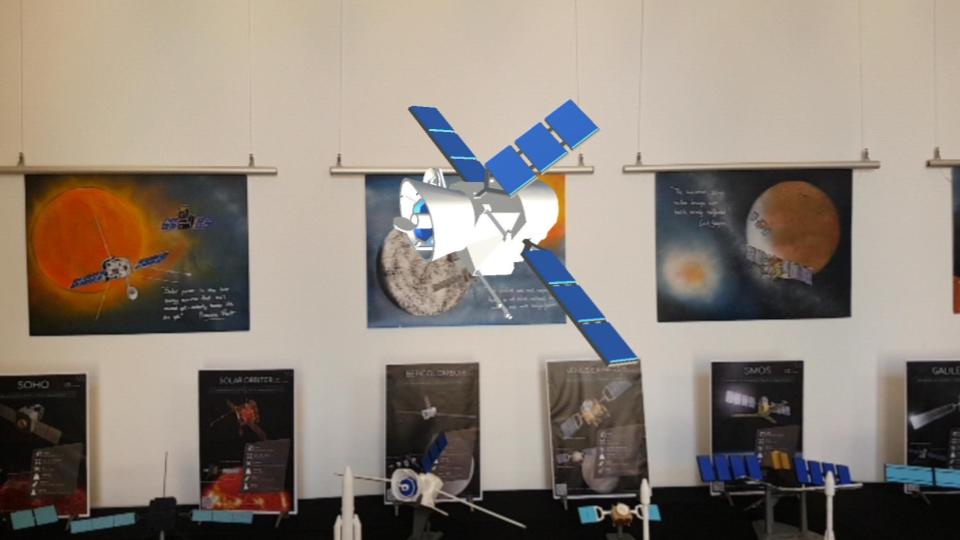 The D-building at ESAC (European Space Astronomy Centre), where the exhibition takes place, is a shared facility between ESA (European Space Agency) and CAB (AstroBiology Centre). CAB, associated to the NASA Astrobiology Institute, is a joint institution between CSIC (Superior Scientific Investigations Council) and INTA (National Institute of Aerospace Technology), which has been present at ESAC since the early days of LAEFF (Laboratory for Space Astrophysics and Theoretical Physics), now part of CAB’s Astrophysics Department. Besides for hosting CAB’s Astrophysics Department and many ESA workers, ESAC’s D-building also provides space for meeting and projection rooms that are used for reunions, institutional visits, workshops, and for special events such as ESAC’s Space Camp or the latest SpaceRobotics exhibition that we presented above.
The D-building at ESAC (European Space Astronomy Centre), where the exhibition takes place, is a shared facility between ESA (European Space Agency) and CAB (AstroBiology Centre). CAB, associated to the NASA Astrobiology Institute, is a joint institution between CSIC (Superior Scientific Investigations Council) and INTA (National Institute of Aerospace Technology), which has been present at ESAC since the early days of LAEFF (Laboratory for Space Astrophysics and Theoretical Physics), now part of CAB’s Astrophysics Department. Besides for hosting CAB’s Astrophysics Department and many ESA workers, ESAC’s D-building also provides space for meeting and projection rooms that are used for reunions, institutional visits, workshops, and for special events such as ESAC’s Space Camp or the latest SpaceRobotics exhibition that we presented above.
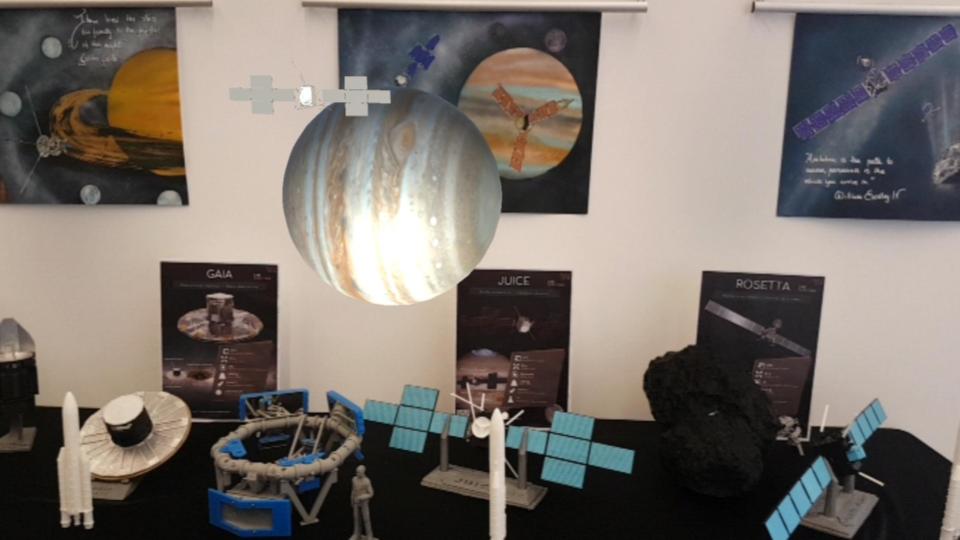 The following can be seen among the represented spacecraft:
The following can be seen among the represented spacecraft:
- SOHO (SOlar Heliospheric Observatory) is a space-based observatory viewing and investigating the Sun from its deep core, through its outer atmosphere, out to a distance ten times beyond the Earth’s orbit.
- Solar Orbiter is a mission dedicated to solar and heliospheric physics, making a close approach it will find out ever more about our nearest star.
- BepiColombo is Europe’s first mission to Mercury. In 2018, it will set off and begin a journey to the smallest and least explored rocky planet in our Solar System. When it reaches Mercury in late 2025, it will endure temperatures in excess of 350 °C and gather data during its 1-year nominal mission.
- Venus Express is a satellite optimized for studying the atmosphere of Venus, from the surface right up to the ionosphere. It arrived at Venus in April 2006 and continued operating for more than eight years.
- SMOS (Soil Moisture and Ocean Salinity) mission is dedicated to making global observations of soil moisture over land and salinity over oceans to achieve a better understanding of Earth’s water cycle.
- Galileo is Europe’s own global navigation satellite system, providing a highly accurate, guaranteed global positioning service under civilian control. The Galileo Space Segment will comprise a constellation of a total of 30 Medium Earth Orbit (MEO) satellites.
- The 2020 mission of the ExoMars programme will deliver a European rover and a Russian surface platform to the surface of Mars. The ExoMars rover will travel across the Martian surface to search for signs of life. It will collect samples with a drill and analyze them with next-generation instruments.
- The 2016 ExoMars Trace Gas Orbiter is the first in a series of Mars missions whose key goal is to gain a better understanding of methane and other atmospheric gases that could be evidence for possible biological or geological activity.
- Planck‘s objective is to analyze, with the highest accuracy ever achieved, the remnants of the radiation that filled the Universe immediately after the Big Bang, this we observe today as the Cosmic Microwave Background.
- XMM-Newton is the biggest scientific satellite ever built in Europe, its telescope mirrors are amongst the most powerful ever developed in the world, and with its sensitive cameras, it can see much more than any previous X-ray satellite.
- Herschel Space Observatory flew the largest single mirror ever built for a space telescope. At 3.5-metres in diameter, the mirror collected long-wavelength radiation from some of the coldest and most distant objects in the Universe.
- JUICE (JUpiter ICy moons Explorer) will spend at least three years making detailed observations of the giant gaseous planet Jupiter and three of its largest moons, Ganymede, Callisto, and Europa.
- Rosetta arrived at Comet 67P/Churyumov-Gerasimenko on 2014. It is the first mission in history to rendezvous with a comet, escort it as it orbits the Sun, and deploy a lander to its surface.
- Gaia is an ambitious mission to chart a 3D map of our Galaxy, which will include the position, size, temperature, composition, and rotation and moving speed of all the stars it maps.
TEST IT!!
YOU CAN TEST A BASIC STATIC VERSION WITH THE FREE APP NUBALOAR AND THE NEXT PICTURES
